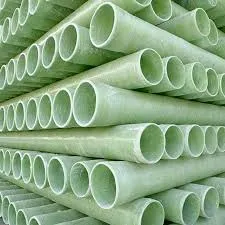
-
 Afrikaans
Afrikaans -
 Albanian
Albanian -
 Amharic
Amharic -
 Arabic
Arabic -
 Armenian
Armenian -
 Azerbaijani
Azerbaijani -
 Basque
Basque -
 Belarusian
Belarusian -
 Bengali
Bengali -
 Bosnian
Bosnian -
 Bulgarian
Bulgarian -
 Catalan
Catalan -
 Cebuano
Cebuano -
 China
China -
 China (Taiwan)
China (Taiwan) -
 Corsican
Corsican -
 Croatian
Croatian -
 Czech
Czech -
 Danish
Danish -
 Dutch
Dutch -
 English
English -
 Esperanto
Esperanto -
 Estonian
Estonian -
 Finnish
Finnish -
 French
French -
 Frisian
Frisian -
 Galician
Galician -
 Georgian
Georgian -
 German
German -
 Greek
Greek -
 Gujarati
Gujarati -
 Haitian Creole
Haitian Creole -
 hausa
hausa -
 hawaiian
hawaiian -
 Hebrew
Hebrew -
 Hindi
Hindi -
 Miao
Miao -
 Hungarian
Hungarian -
 Icelandic
Icelandic -
 igbo
igbo -
 Indonesian
Indonesian -
 irish
irish -
 Italian
Italian -
 Japanese
Japanese -
 Javanese
Javanese -
 Kannada
Kannada -
 kazakh
kazakh -
 Khmer
Khmer -
 Rwandese
Rwandese -
 Korean
Korean -
 Kurdish
Kurdish -
 Kyrgyz
Kyrgyz -
 Lao
Lao -
 Latin
Latin -
 Latvian
Latvian -
 Lithuanian
Lithuanian -
 Luxembourgish
Luxembourgish -
 Macedonian
Macedonian -
 Malgashi
Malgashi -
 Malay
Malay -
 Malayalam
Malayalam -
 Maltese
Maltese -
 Maori
Maori -
 Marathi
Marathi -
 Mongolian
Mongolian -
 Myanmar
Myanmar -
 Nepali
Nepali -
 Norwegian
Norwegian -
 Norwegian
Norwegian -
 Occitan
Occitan -
 Pashto
Pashto -
 Persian
Persian -
 Polish
Polish -
 Portuguese
Portuguese -
 Punjabi
Punjabi -
 Romanian
Romanian -
 Russian
Russian -
 Samoan
Samoan -
 Scottish Gaelic
Scottish Gaelic -
 Serbian
Serbian -
 Sesotho
Sesotho -
 Shona
Shona -
 Sindhi
Sindhi -
 Sinhala
Sinhala -
 Slovak
Slovak -
 Slovenian
Slovenian -
 Somali
Somali -
 Spanish
Spanish -
 Sundanese
Sundanese -
 Swahili
Swahili -
 Swedish
Swedish -
 Tagalog
Tagalog -
 Tajik
Tajik -
 Tamil
Tamil -
 Tatar
Tatar -
 Telugu
Telugu -
 Thai
Thai -
 Turkish
Turkish -
 Turkmen
Turkmen -
 Ukrainian
Ukrainian -
 Urdu
Urdu -
 Uighur
Uighur -
 Uzbek
Uzbek -
 Vietnamese
Vietnamese -
 Welsh
Welsh -
 Bantu
Bantu -
 Yiddish
Yiddish -
 Yoruba
Yoruba -
 Zulu
Zulu
fiberglass clarifier system for efficient water treatment and solid
Fiberglass Clarifier System for Efficient Water Treatment and Solid Separation
In the realm of water treatment technologies, the quest for efficient and sustainable systems has led to notable advancements. One such innovation is the fiberglass clarifier system, an essential component in various industrial and municipal applications aimed at producing clean, clear water while effectively managing solid waste. This article explores the features, advantages, and applications of fiberglass clarifier systems in the context of modern water treatment processes.
Understanding Fiberglass Clarifiers
Fiberglass clarifier systems are specifically designed to separate solids from liquids in wastewater treatment, drinking water purification, and various industrial processes. These systems typically consist of a large tank or basin made from durable fiberglass, which is known for its corrosion resistance, lightweight nature, and long lifespan. The design of a clarifier usually incorporates a series of baffles that promote the settling of suspended solids by controlling the flow of water and allowing heavier particles to settle at the bottom.
The operation of the clarifier is quite straightforward. Wastewater enters the clarifier, and as the flow slows down, the heavier solids begin to settle out due to gravity. The clear liquid, or supernatant, rises to the surface, where it can be collected and directed for further treatment or discharge. This effective separation process not only reduces the load on subsequent treatment stages but also contributes to the overall efficiency of the water treatment facility.
Advantages of Fiberglass Clarifier Systems
1. Durability and Longevity One of the key advantages of fiberglass materials is their inherent resistance to corrosion and chemical degradation. This makes fiberglass clarifiers ideal for treating various types of wastewater, including those with harsh chemicals and aggressive substances.
2. Lightweight Construction Compared to traditional concrete or steel systems, fiberglass clarifiers are significantly lighter. This aspect simplifies the installation process, reduces transportation costs, and enables easier modifications or expansions to existing water treatment facilities.
fiberglass clarifier system for efficient water treatment and solid

3. Customization Fiberglass clarifiers can be engineered to meet specific operational requirements, including volume capacity, flow rate, and size constraints. This customization ensures optimal performance tailored to the unique characteristics of the wastewater being treated.
4. Cost-Effectiveness Although the initial investment in fiberglass clarifiers may be higher than other materials, their low maintenance costs and high efficiency often result in significant savings over time. The quick installation and reduced need for extensive foundation work further enhance their economic appeal.
5. Sustainability As global water scarcity becomes an increasingly pressing issue, the efficient operation of water treatment systems is paramount. By facilitating the effective removal of solids and reducing the overall energy consumption in treatment processes, fiberglass clarifiers contribute to more sustainable water management practices.
Applications of Fiberglass Clarifier Systems
Fiberglass clarifier systems find applications across a wide range of sectors. In municipal water treatment plants, they are utilized to remove solids from drinking water sources, ensuring compliance with health standards and improving water quality. Industries such as food processing, pharmaceuticals, and chemical manufacturing also employ fiberglass clarifiers to manage wastewater effluents, thereby minimizing environmental impact and adhering to regulatory requirements.
Moreover, in the context of stormwater management, fiberglass clarifiers are implemented to treat runoff water before it is released into natural bodies, effectively reducing pollutants and preserving aquatic ecosystems. Their versatility makes them an ideal solution for facilities looking to enhance their treatment processes while conserving water resources.
Conclusion
The fiberglass clarifier system stands out as a pivotal advancement in the field of water treatment, offering numerous benefits in terms of efficiency, durability, and environmental sustainability. As water management challenges continue to evolve, the adoption of such innovative technologies will play a crucial role in safeguarding our water resources for future generations. Investing in fiberglass clarifier systems is not only a step toward improved water quality but also a commitment to sustainable practices in water management.









